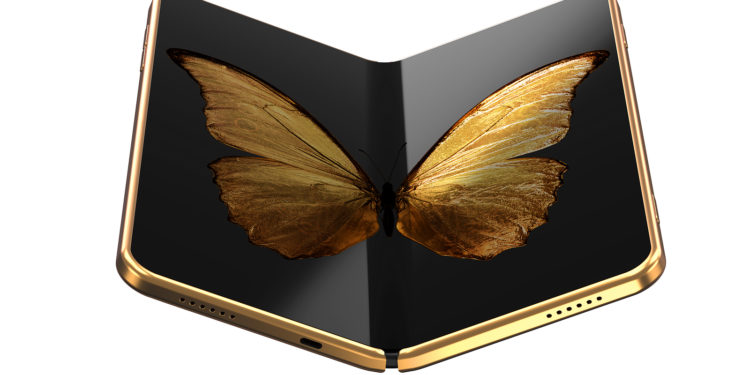Apple has received a patent for touch-sensitive controls, including solid-state buttons on every surface of the current iPhone design and a foldable iPhone.
The touchscreen was not invented with the iPhone. But Apple has made it ubiquitous. Just as important as the multi-touch function on the front of the iPhone is Apple's plan to improve touch sensitivity on all sides and edges of the device. The new granted Patent "Electronic Devices With Display And Touch Sensor Structures" aims to make it easier to control the iPhone by tapping, swiping or touching. It also provides some details on how this can be achieved even if the iPhone will be foldable or curved in the future. The description states:
It can be challenging to capture a user's touch input and display the images to the user efficiently. For example, when a user makes a touch input on a touchscreen, their hand may block images displayed on the screen. Buttons and other input devices can be used to capture a user's input. However, these types of input devices may not be as convenient and versatile as a touch sensor. Displays are sometimes not visible from certain directions and may be smaller than desired.
The foldable iPhone could benefit from wider touch sensitivity
Ultimately, the differences to a normal iPhone are not that great if the technology described in the patent were used. The iPhone's casing is different in each case. But the touch sensitivity is created using the same process. The "control circuits, batteries and other components" are located inside the casing - this casing has "walls". Apple explains:
The walls can have opaque and transparent parts. They can be made of opaque plastic, metal, fiber composites and layers of other materials that contain fibers, ceramics and other opaque materials.
Apple distinguishes between the edges of a normal iPhone and the curved edges of a foldable device and calls them “side walls”.
The front and portions of the side walls may be made of a glass layer or other transparent element. A touch sensor layer and a display layer may extend beneath the front and side wall portions of the glass layer. A touch sensor layer may also extend beneath the opposite rear wall.
Much of the patent deals with details, such as that touch sensitivity “may have thin metal lines (e.g. nanostructures) so small as to be invisible to the eye.”
Touch could replace solid-state keys
There have already been rumors that the iPhone 15 Pro might no longer have physical buttons. It is claimed that the iPhone will get touch or solid-state buttons instead of volume controls or sleep/wake buttons. The patent supports this idea.
The touch input on the side panels [could] also be used to control a camera (e.g. as input for a virtual shutter button), can be used as input in other virtual button scenarios, can be used when implementing a volume control or a slider to control other device functions (e.g. screen brightness, color settings, contrast settings, etc.).
However, designs are more frequently discussed in which the keys remain as they are.
Openings can be made in the walls [of the touch-sensitive edges], for example to accommodate a button.
Applications for touch-sensitive edges
In addition to the technology and the way in which the goal can be achieved, Apple also gives some examples of what such touch control could be useful for.
For games and other applications, it may be desirable to use a touch sensor on the back of the device to capture touch inputs while displaying the corresponding visual information on a display on the opposite front of the device.
The Apple patent dates back to an application from 2013. But the company has received similar patents before. In 2016, for example, a patent was granted that essentially relates to the development of a wraparound iPhone with touch-sensitive edges integrated into the design. (Photo by artmagination / Bigstockphoto)





